Ask Yourself a Simple Question and Let the Answer Unfold
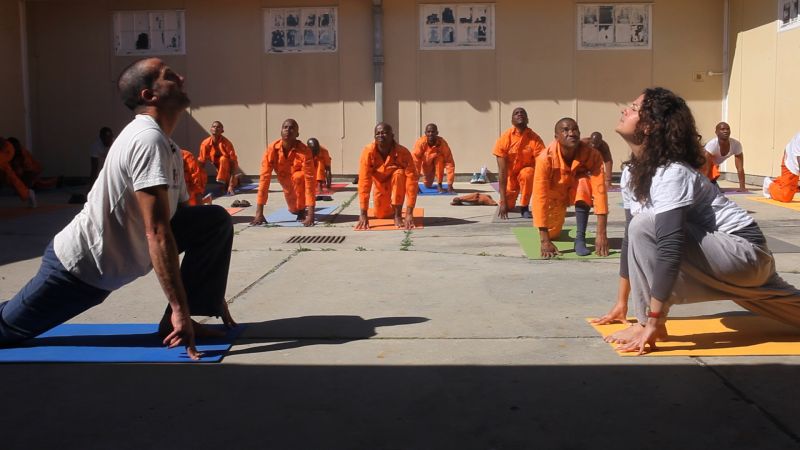
“I was curious to push some edges within myself by going into places where I didn’t feel comfortable, as a way of growing”, reflects Brian Bergman, a yoga teacher from Cape Town.
“And prison, certainly there was a lot of fear for me going in, a big unknown of what’s going on behind those walls.”
Trained in the Bihar School of Yoga in Munger, India, Brian sought to deepen his own practice by exploring opportunities for seva, Sanskrit for service. As a result, he co-founded SevaUnite, a platform that encourages service in South Africa.
In the process, Brian found his own purpose in serving in prisons.
It took a lot of persistence – 1.5 years of it to be precise – before SevaUnite was able to start the first regular yoga sessions in the Pollsmoor Maximum Prison in Cape Town. It is the same prison where Nelson Mandela was held in 1982-1988.
Entering Pollsmoor for the first session was in itself an opportunity for practice for Brian.
“I was doing a practice of making contact with the environment, going in with the intention of being as present and aware as possible.”
“Every inmate that we walked past, I made sure to make eye contact, to nod and greet them, as well as all the wardens. That practice is incredibly powerful because it makes you feel at ease in the space and it makes the space feel at ease with you.”
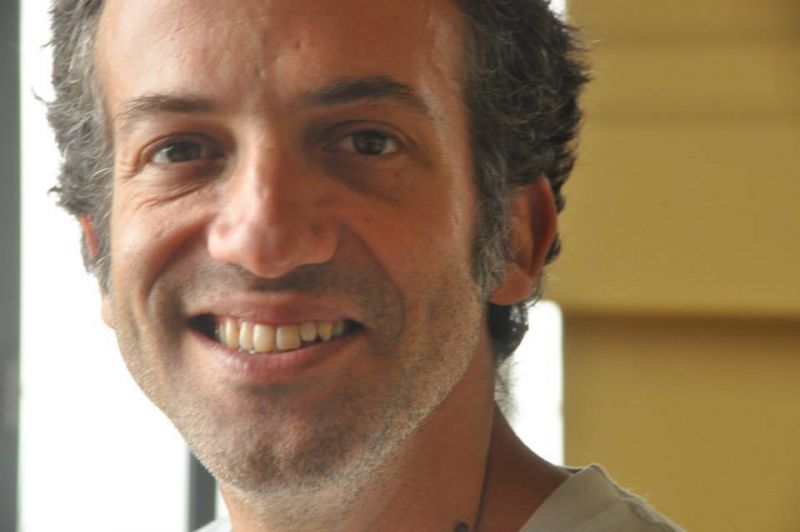 Working in Prisons Because Prisons Don’t Work
Working in Prisons Because Prisons Don’t Work
For Brian, teaching yoga to inmates is a source of enthusiasm and joy. Outside prison walls, this is however not always met with a positive response.
“I understand fully well that it is often seen as a waste of time to teach offenders - especially if you have been a victim of crime. People have gone so far as to ask if [the inmates] really deserve it.”
Brian sees that the negative reaction stems from a misconception about yoga and its purpose, as well as a view that inmates are simply undeserving of any support.
But this is a very narrow view.
According to the World Prison Population List, over 10 million people are held in penal institutions throughout the world. The numbers have risen by up to 30 per cent between 1999-2013. The rate surpasses the growth of world population in the same period of time.
In South Africa, there are nearly 160 000 inmates. The prison door revolves fast: over 80 per cent of convicts return. As going to prison increases, not decreases, the chances of committing a crime, Brian underscores the urgency of taking a critical look at how public money is spent on criminals.
At the heart of SevaUnite’s Prison Freedom Project is the tremendous potential of yoga to support rehabilitation and to reduce recidivism.
“Yoga gives a person powerful tools that help them work with their negative emotions, releasing habits and negative patterns of behavior and enhancing the positive expression of their being.”
Radical Change
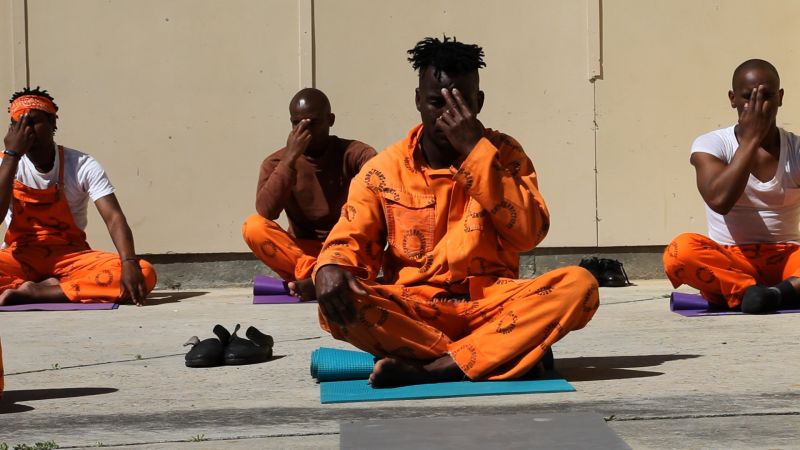 “Going in, there is a lot of the ‘tough guy’ prison attitude. But within a few minutes, the inmates’ faces soften, there are smiles, the atmosphere shifts as the body starts to relax”, Brian recounts his observations.
“Going in, there is a lot of the ‘tough guy’ prison attitude. But within a few minutes, the inmates’ faces soften, there are smiles, the atmosphere shifts as the body starts to relax”, Brian recounts his observations.
“We’ve taught in kitchens, in corridors, in gyms… We’ve taught in crazy places just to find some space to do it, because a lot of our prisons are not built with rehabilitation in mind.”
Prison is one of the last places to come to mind when thinking of an ideal place to do meditation or relaxation practice. The Prison Freedom Project draws from the Satyananda yoga tradition to equip inmates with simple but powerful practices that allow them to use the noisy environment to calm themselves down or to become focused. These include breath awareness and making oneself aware of the sounds without reacting to them.
“That gradual training of awareness has a profound effect.”
In the extreme stress of the prison environment, the effect is clearly evident.
“Instead of being angry and frustrated and stressed all the time, the inmates are calm, more relaxed and focused. Which means that they are having a better existence.”
Some of the most striking feedback has come from the toughest gangsters.
“One of our volunteers, Kevin, had a conversation with an inmate who asked if he’d even been a victim of crime. Kevin told him how he’d actually recently been robbed with a knife”, Brian shares.
The inmate responded that he had recognized the fear in Kevin. He had seen the same fear in his own victims. For the first time, he was realizing that his actions had been creating that in someone else. The ability to contemplate his actions and their effects from both sides had come to him from yoga and from cultivating mindfulness.
Prison Freedom Project is also inspiring inmates to engage in service. Brian shares the story of John, an inmate who was trying to figure out how he could serve:
“One of the things he discovered he could do was to give away his five slices of bread, which inmates receive during lunchtime to keep and have as dinner. He started to give his bread to the aged inmates who were hungry and malnourished.”
Multiplier Effects
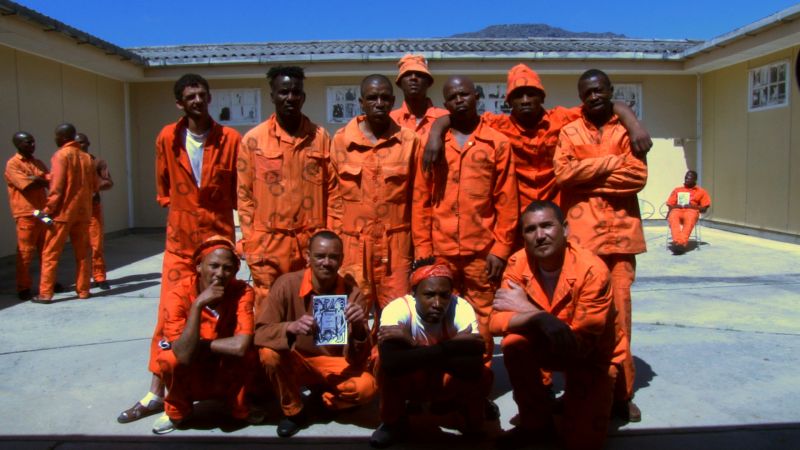 A prison warden once phoned SevaUnite, asking: “What are you teaching these guys? Something’s changed!”
A prison warden once phoned SevaUnite, asking: “What are you teaching these guys? Something’s changed!”
That something benefits other programs in the prison, too.
“For example, there are guys who were really struggling to study, taking courses to try and improve themselves. Then they started doing yoga and suddenly they’re passing the courses and finding it easier to concentrate”, Brian explains.
The program is also indirectly helping various faith-based groups that work in the prison. As inmates are calmer and more contemplative, their state of mind is conducive for example for studying scriptures.
“We get a lot of feedback from the Christian group that this is helping them understand the Bible better. And we get the same feedback from the Muslim group regarding the Koran.”
Brian and nine other teachers of the Prison Freedom Project currently run yoga and meditation classes in three prisons. The seeds, however, have spread into eight facilities with inmates who have been transferred. A movement is sprouting.
In a facility where they have not yet taught a single class, there are 100 inmates doing the correspondence course. This all started from just one inmate who had attended the classes in Pollsmoor. When transferred, he took the instructions with him and shared them with other inmates - as well as with a warden, who really liked the idea.
“They’ve driven it themselves. We’ve just got commissioned to begin teaching in that prison”, Brian rejoices.
The awareness of the prison staff is also shifting. Many wardens have been expressing their interest in trying out yoga and meditation.
“In Pollsmoor, where we have been for five years, we’ve tried to get into staff wellness days and we’ve always been saying that we’d love to teach them. This year they suddenly contacted us and said they would like to have yoga for the staff once a week. We must have reached a critical mass of people who saw it as valuable.”
A Deepening Presence
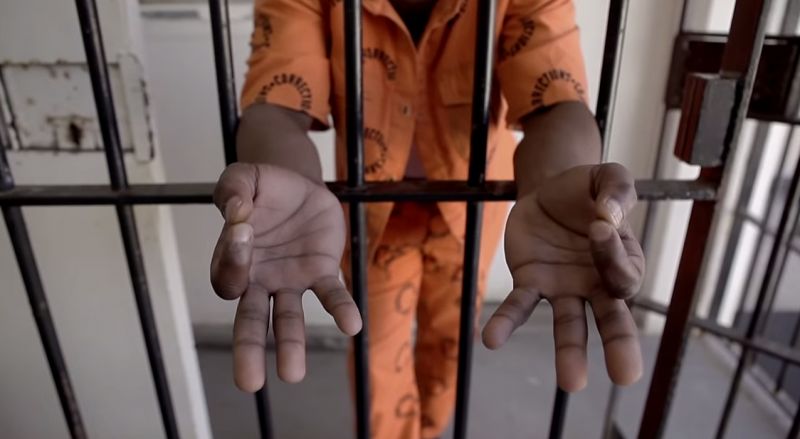 Brian sees service as a way to one’s own inner transformation.
Brian sees service as a way to one’s own inner transformation.
“Ask yourself the question ‘How can I help?’ Then, let the answer unfold. Feel it inside. That is the path of service. If you follow that, you might not always get what you want in life but you will get what you need, to grow and to expand”, he contemplates.
As the answer has been unfolding for Brian, how has it changed him?
“It’s helped me lose a lot of fear. Not because I’m teaching in prisons but because you face suffering. And you face it in a way that you see you can actually manage it. And that you can hold these difficult spaces and there’s compassionate action that comes from being in that space with a certain amount of presence. And then deepening that presence.”
Now, SevaUnite is aiming to expand the Prison Freedom Project from three to five facilities, offering 12 weekly classes by next year as well as other important next steps.
One of the steps is a teacher training program. Inmates who have completed their six-module yoga course are encouraged to guide three others through the course. When they do that, they get a teacher certificate.
The first yogis from the program are going to be released from prison in the next couple of years. This marks a critical new phase for the Prison Freedom Project and they look forward to following these inmates’ progress.
“If you can improve someone’s experience of themselves while they’re in prison and get them to discover their own inner resources, then I can’t help but think that it’s going to be better, one way or another, when they’re released.”
SevaUnite also wants to measure the Project’s impact better, with the aim of pushing the government to back prison yoga programs as a simple and cost-effective solution to the multiple problems inmates face on a daily basis.
And, as a long-term vision, Brian sees the establishment of a halfway house. A place for released inmates to find their feet. A place of support as they strive to reintegrate back into society.
“To provide an environment where they can live the yoga still, consciously choosing to live in and support a community in which their work is valued.”
Maria Jain is a coordinator for National Committee for UN Women in Finland and co-founder of Kantha, a web store where India’s rich craft tradition meets design that appeals to the contemporary eye.
